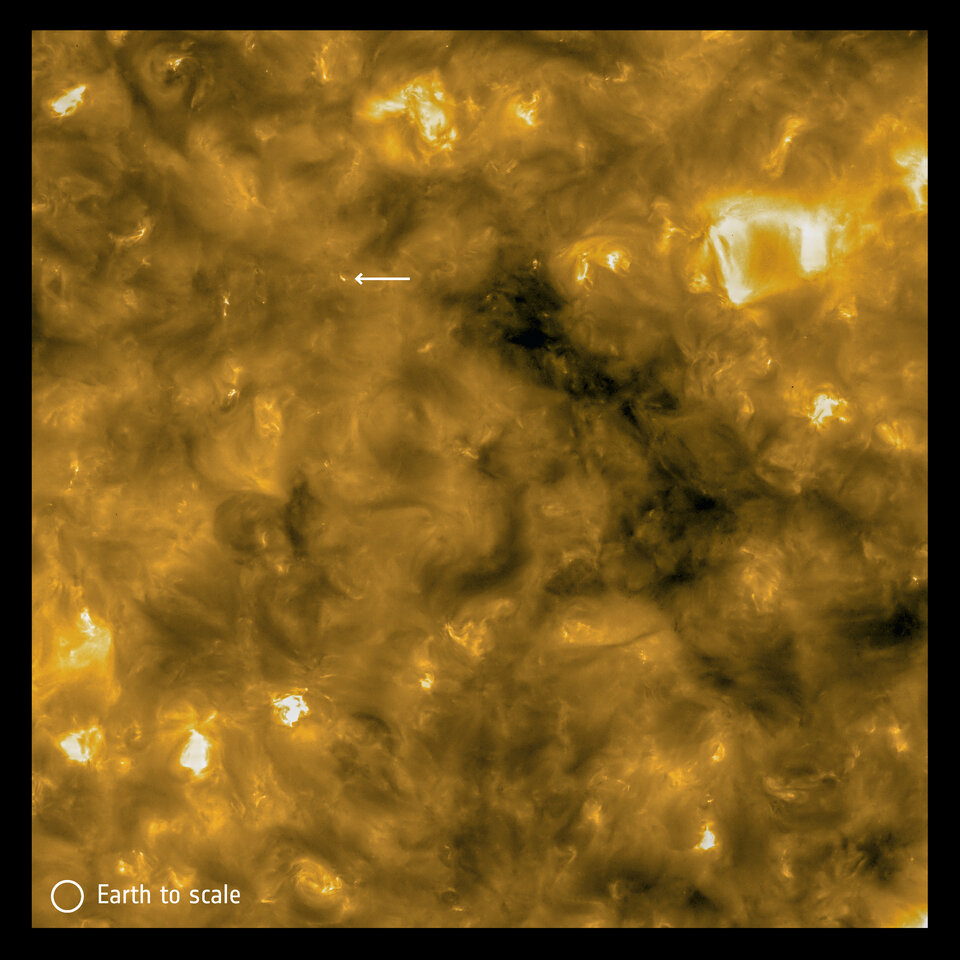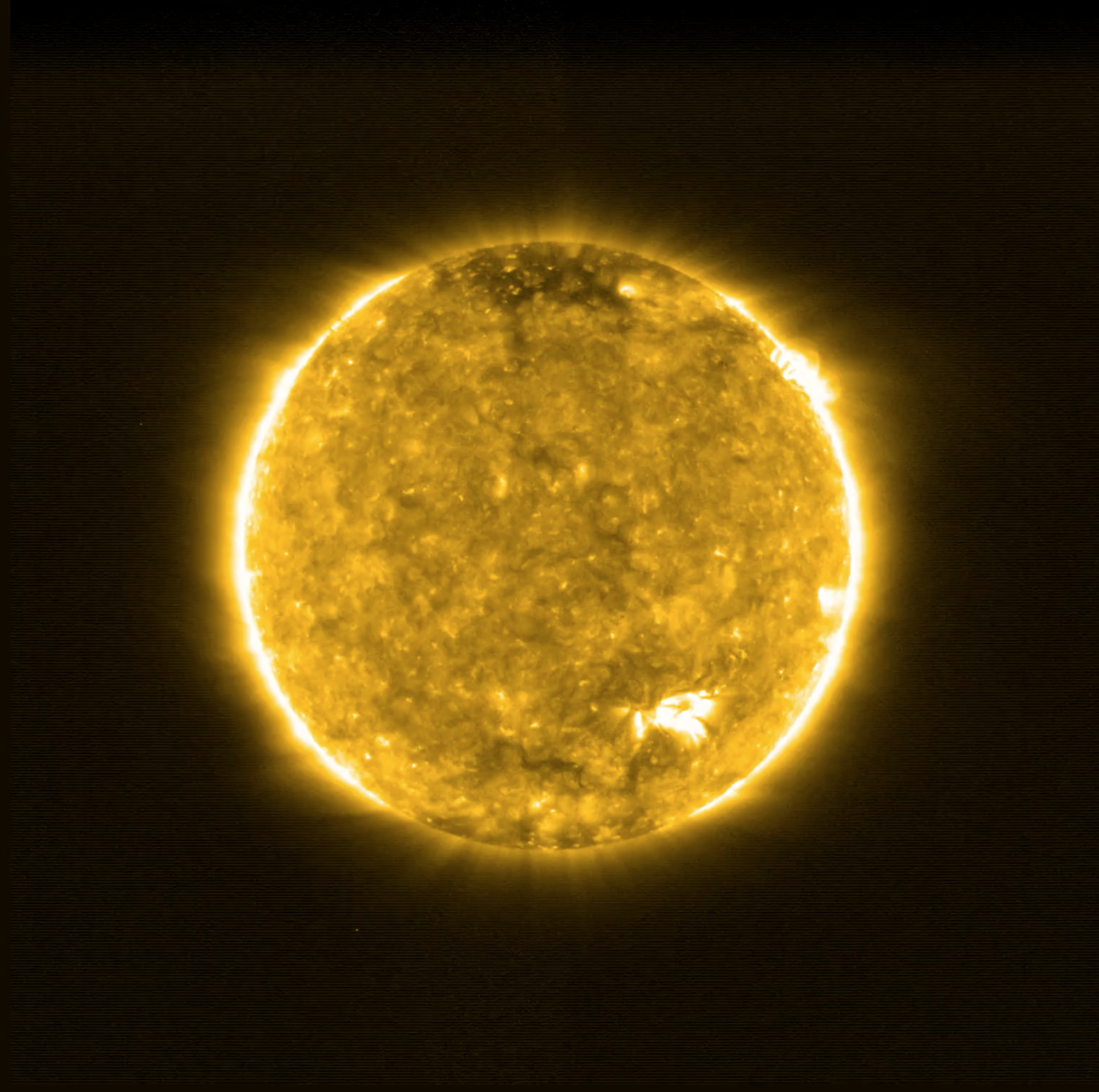Solar Orbiter’s first images revealed
The first images from the Sun-observing Solar Orbiter have been unveiled today – no other spacecraft has captured images from such close proximity to our nearest star.
They reveal omnipresent miniature solar flares, dubbed ‘campfires’, near the surface of the Sun.
When the images were taken, the spacecraft was only 77 million km away from the Sun, about halfway between Earth and its nearest star.
Solar Orbiter, a mission by ESA and NASA, was launched on 10 February 2020. The UK played an important role in its development.
The spacecraft was built by Airbus at its base in Stevenage, UK, and of the ten instruments on board, four were developed with the help of British scientists.

Solar Orbiter carries six telescopes that are used to image the Sun and its surroundings. The remaining four in-situ instruments monitor the environment around the spacecraft.
Scientists can then compare data from both sets of instruments to get insights into the generation of solar wind – the stream of charged particles from the Sun that influences the entire Solar System.
The campfires shown in the first image set were captured by the Extreme Ultraviolet Imager, which researchers from University College London had a key role in developing.
There is still a lot to be learned about the campfires, but there are already theories that these miniature flares could be contributing to one of the most mysterious phenomena on the Sun, the coronal heating.
The mechanisms that heat the solar corona – the outermost layer of the Sun’s atmosphere which extends millions of kilometres into outer space – are not yet fully understood.
Although it is far too early to tell, scientists hope that Solar Orbiter mission will help address some of these mysteries.
While the Extreme Ultraviolet Imager observes structures on the Sun, another instrument, the Polarimetric and Helioseismic Imager, measures the magnetic field on its surface.

It is designed to monitor active regions on the Sun with especially strong magnetic fields that can give birth to solar flares.
Solar flares are closely associated with the release of energetic particles that emanate through the corona into surrounding space, which can cause magnetic storms that disrupt telecommunications networks on Earth.
Solar Orbiter’s four in-situ instruments characterise the magnetic field lines and solar wind as they pass the spacecraft.
The in-situ instruments and remote-sensing instruments onboard complement each other to provide a holistic picture of the Sun and the surrounding environment.
Christopher Owen, of University College London’s Mullard Space Science Laboratory and Principal Investigator of the in-situ Solar Wind Analyser, says, “Using this information, we can estimate where on the Sun that particular part of the solar wind was emitted, and then use the full instrument set of the mission to reveal and understand the physical processes operating in the different regions on the Sun which lead to solar wind formation.”
Daniel Müller, ESA’s Solar Orbiter Project Scientist, says, “We are all really excited about these first images – but this is just the beginning. Solar Orbiter has started a grand tour of the inner Solar System and will get much closer to the Sun within less than two years. Ultimately, it will get as close as 42 million km, which is almost a quarter of the distance from Sun to Earth.”
The Solar Orbiter First Images photo gallery is available here.
More Information:
Solar Orbiter is a space mission of international collaboration between ESA and NASA. Nineteen ESA Member States (Austria, Belgium, the Czech Republic, Denmark, Finland, France, Germany, Greece, Italy, Ireland, Luxembourg, the Netherlands, Norway, Poland, Portugal Spain, Sweden, Switzerland, and the United Kingdom), as well as NASA, contributed to the science payload and/or the spacecraft. The satellite was built by prime contractor Airbus in the UK.















 Germany
Germany
 Austria
Austria
 Belgium
Belgium
 Denmark
Denmark
 Spain
Spain
 Estonia
Estonia
 Finland
Finland
 France
France
 Greece
Greece
 Hungary
Hungary
 Ireland
Ireland
 Italy
Italy
 Luxembourg
Luxembourg
 Norway
Norway
 The Netherlands
The Netherlands
 Poland
Poland
 Portugal
Portugal
 Czechia
Czechia
 Romania
Romania
 United Kingdom
United Kingdom
 Slovenia
Slovenia
 Sweden
Sweden
 Switzerland
Switzerland


























